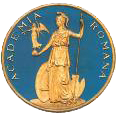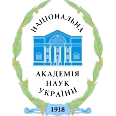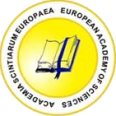About the Academy of Sciences of Moldova
The Academy of Sciences develops its activity according to the provisions of the Constitution of the Republic of Moldova, the Code on Science and Innovation, the Partnership Agreement with the Government of the country, its Statute and other legislative and normative documents.
During its development A.S.M. has become a real scientific forum of devotion, an authentic institution of research and creation. At present, the academic corps of the Academy of Sciences brings together 47 Full Members (Academicians), 60 Corresponding Members and 38 Honorary Members. Within the framework of the A.S.M. there are institutions that carry out fundamental, applicative scientific researches and activities of innovation and technologic transfer, which results are materialized in new scientific knowledge, technological and technical elaborations, capitalization of the national patrimony, promotion of scientific and cultural values on a national and world level, training of scientific personnel of high qualification.
The constitution of the academic sector of science in the Republic of Moldova was initiated immediately after the Second World War (1939-1945). On the basis of the decision of the Government of the USSR of March 11, 1946 to organize in Chisinau the Base of scientific researches of the Academy of Sciences of USSR the Council of Ministries of MSSR and the Bureau of CC of the CP (b) of Moldova has adopted on June 12, 1946 the Decision Nr. 583 “ On the creation of the Moldovan Base of scientific researches of the Academy of Sciences of USSR in Chisinau. On June 29 the Presidium of the Academy of Sciences of the USSR has examined and approved the structure of the Base, its main directions of research and the governing bodies. Subsequently, in 1949, the Base was transformed in the Moldovan Branch of the Academy of Sciences of USSR.
Academician Veaceslav Volghin, Vice-President of the Academy of Sciences of USSR, responsible for the coordination of activities of bases and branches of the Academy of Sciences of USSR, was appointed as the Director of the Base. In 1949 Pavel Baranov, Corresponding Member of the Academy of Sciences of USSR, substituted him and was appointed as the President of the Presidium of Moldovan Branch. Macarie Radul was appointed as vice-director and beginning with 1947 Iachim Grosul, Doctor of Historical Sciences, substituted him, so that afterwards, beginning with 1954, he was appointed as the President of the Presidium of Moldovan Branch.
In the years that followed after the creation of the Moldovan Base, a series of measures were achieved regarding establishing and consolidation of technical-material basis, creation of research institutes, improvement of the way of scientific researches organization. The thorough development of scientific researches was accompanied by the improvement of organizational structure of the Moldovan Branch, which by 1960 has become an important scientific center of the republic, in the framework of which 9 institutes, the Botanical Garden and other autonomous institutes functioned, covering about 900 persons, among whose more than 250 scientific researchers, including 20 Doctors Habilitat and 110 Doctors of Sciences.
On July 26, 1960 the Government of the USSR adopted the Decision “ On the Creation of the Academy of Sciences of the Moldovan SSR’, on the basis of the scientific institutes of the Moldovan Branch of the Academy of Sciences of USSR. A similar decision was adopted on November 29, 1960 by the CC of the CP of Moldova, the Presidium of the Supreme Soviet of the Moldovan SSR and the Council of Ministers of the Moldovan SSR.
The inaugural act of constitution and opening of the Academy of Sciences of the Moldovan SSR took place on August 2, 1961. From the moment of foundation till the proclamation of the independence of the Republic of Moldova (August 27, 1991) the Academy of Sciences of Moldova was an integral part of the ex-soviet academic system, being subordinated both to the Presidium of the Academy of Sciences of USSR and the Council of Ministries of the Moldovan SSR.
By the decision of the Government of the MSSR of August 1, 1961 11 Titular Members (Academicians) and 13 Corresponding Members of the Academy of Sciences were designated from among the scientists and people of culture. The following persons became Titular Members: Anton Ablov, Vladimir Andrunakievici, Vasile Cervinski, Procopie Dvornicov, Iachim Grosul, Boris Lazarenco, Gheorghe Lazurevski, Andrei Lupan, Iacob Print, Alexei Spasski, Iosif Vartican; Corresponding Members: Gheorghe Cealii, Nicolae Corlateanu, Ion Dicusar, Lazar Dorohov, Nicolae Frolov, Mihail Iarosenko, Anatolie Kovarski, Iurie Lealicov, Constantin Moraru, Iurie Petrov, Macarie Radul, Eugeniu Russev, Petru Ungureanu.
The first President of the Academy of Sciences of Moldova was Iachim Grosul, Corresponding Member of the Academy of Sciences of USSR, Academician of the A.S.M., Doctor Habilitat of Historical Sciences (1961-1976), followed by Alexandru Jucenco, Corresponding Member of the Academy of Sciences of USSR, Academician of the A.S.M., Doctor Habilitat of Biological Sciences (1977-1989), by Andrei Andries, Academician of the A.S.M., Doctor Habilitat of Physical and Mathematical Sciences (1989-2004) and Gheorghe Duca, Academician of the A.S.M., Doctor Habilitat of Chemical Sciences (beginning with 2004).
The constitution of the Academy of Sciences have had a constructive impact over further evolution of science in the republic, diversification of the fields of investigation, development of fundamental researches in the modern fields of contemporary science, capitalization of scientific, historic and cultural patrimony, implementation of scientific researches results in the national economy. During a relatively short period of time the Academy of Sciences went over a hard but fruitful way of consolidation and affirmation, of seeking and achievements.
The period 1961-1990 was highlighted by a continuing growth of the academic institutions role in the solution of the diverse problems of national economy and culture development, increasing of the level and competitiveness of scientific researches, significant consolidation of human scientific potential and of technical- scientific and experimental basis, training of scientific personnel of high qualification, creation of autochthon prestigious scientific schools in many fields of science, well-known and appreciated in the country and abroad by reaching European heights with opening to the world ones. Establishment and consolidation of the relations of scientific collaboration with the Academies of Sciences, scientific and higher education institutes from the former Soviet Union, Europe, Asia and USA also spotlights this period. The scientific-technological elaborations of scientists were patented in USA, Germany, France, Japan, Sweden, Italy, Australia and other countries.
By the end of 80’ the Academy of Sciences has become the main scientific center of Moldova. In the framework of it there functioned 31 scientific, scientific-experimental and science service organizations, among which 21 institutes and research institutes. The personnel of the Academy constituted more than 5300 employees, among which 1312 were scientific researchers, including 125 Doctors Habilitat and 824 Doctors of Sciences.
An essential new stage in the development of the Academy of Sciences, of hopes and searches, is the period that followed after the proclamation of sovereignty (June 23, 1990) and independence (August 27, 1991) of the Republic of Moldova, due to which the A.S.M. has become a real scientific republican forum, an institution of research, with an adequate autonomy to solve its internal problems. This period was spotlighted by the constitution and development of the legislative and legislative-normative framework of the sphere of science and innovation and of the Academy of Sciences, modification and improvement of the organizational-institutional system of science management and of R&D activity. New Sections of Sciences were created, such as Section of Agricultural Sciences, Medical Sciences, and Technical Sciences, as well as new research institutes, a series of research sections with autonomous statute being reorganized. The democratic principles regarding the organization and management of the R&D activity were confirmed and promoted, the institutes being given the autonomy in the establishment of their structure and functioning mechanisms and in choosing the methods and means of activity. The possibilities of integration in the European and world scientific community were extended.
At the same time, the economical reorganizations of the last decade of the XXth century, elaborated and promoted often without a motivated scientific support, without a scientific expertise and prognosis have led to destructive phenomena both in the real sector of the national economy and in the fields of social, cultural and spiritual life, including in the sphere of science and innovation.
Financial insufficiency and instability, lack of experience in the management of science in the deficient conditions of the market economy in transition, that imposed the application of an inadequate mode of utilization of material and financial resources, have provoked negative phenomena, which destructively affected the existent scientific potential: deterioration of material and technical-scientific basis; the brain-drain in the R&D sphere and reduction of the flow of young specialists; disintegration of the technological unity of scientific research chain- application of technical-scientific elaborations in production, etc. Nevertheless, important efforts were made for the conservation of the human scientific potential. The number of scientific researchers, including those with scientific degree in the framework of the Academy of Sciences has diminished, respectively, by 25%.
Despite the difficulties, faced by the academic community, a relatively significant growth of the efficiency of scientific activity was recorded, expressed by the increased number of scientific publications, including abroad, as a whole and by a researcher alone. Scientific-technological elaborations, presented at different national and international exhibitions, were awarded with different prestigious medals. This fact was due, to a great extent, to the phenomenon called “ the inertness effect” (utilization of scientific and scientific-experimental information accumulated previously) and, first of all, to the extension and consolidation of international scientific relations of collaboration and cooperation.
The year 2004 is marked as a turning year in the development of the Academy of Sciences of Moldova. With the adoption of the Code on Science and Innovation the functional and institutional paradigm of the Academy of Sciences has changed essentially by delegation the latter with the Government competences with the view to realization of state policy in the sphere of science and innovation and with the role of coordinator in the promotion of innovations and technologic transfer, attribution of the statute of public institution of national interest in the sphere of science and innovation, diversification of the statute of public law organizations in the sphere of science and innovation of the member of A.S.M., a more wide involving of scientific community in the activities of organization and management of science in the country, preservation and promotion of academic freedom. Thanks to the important efforts of the leaders of the Academy of Sciences, understanding and support from the part of the Government of the Republic of Moldova, the financing of the sphere of science and innovation from the state budget has increased considerably and that has created real premises for the renovation of technical-material and experimental basis, re-equipment of the laboratories with contemporary scientific devices, revival and mobilization of innovation and technological transfer activities, improvement of work conditions and remuneration of scientific researchers , whose average salary increased by 1,5-2 times.
The Assembly of the Academy of Sciences is the supreme leadership body of the Academy of Sciences, constituted of Titular Members (Academicians), Corresponding Members and 78 Doctors Habilitat, elected for a period of 4 years by the meetings of Doctors Habilitat and Doctors of Science of the Sections of Sciences.
The Supreme Council for Science and Technological Development is the executive body of the Assembly and is constituted of 17 persons: the President, Vice-Presidents and the General Scientific Secretary of the Academy of Sciences, Academicians-Coordinators of the Sections of Sciences (appointed from the office) and 6 representatives of the scientific community, including higher education institutes and the State Agency for Intellectual Property, elected by the Assembly for a period of 4 years.
The General Meeting of Titular Members and Corresponding Members represents the highest forum of the academic personnel (Titular Members, Corresponding Members and Honorary Members), composed of the most notorious representatives of the academic, university and branch science.
The Academy of Sciences of Moldova comprises 6 Sections of Sciences: Economical and Mathematical; Biological, Chemical and Ecological; Physical and Engineering; Medical; Agricultural; Humanities and Arts, brining together in its composition Titular Members, Corresponding Members, Honorary Members, scientific researchers, as well as R&D institutes with the statute of institutional member, profile member and affiliated member, who works in the same field of science and innovation sphere.
The main directions of activity of the Academy of Sciences in the quality of public institution of national interest in the sphere of science and innovation are the following:
* elaboration and promotion of the strategy of the sphere of science and innovation development,
* realization of state policy and development of conceptual activity in the sphere of science and innovation;
* identification of strategic directions of the sphere of science and innovation development;
* organization and realization of fundamental scientific researches, elaboration of advanced technologies and new techniques;
* organization of the activity for the elaboration of syntheses regarding the tendencies of social-economic, technological, and human country development, as well as the prognoses for the sphere of science and innovation development;
In order to fulfill the fundamental objectives of the Academy of Sciences the R&D institutes carry out their activity, aiming at achieving the forecasted results out of the strategic directions of the sphere of science and innovation development in 2005-2010:
* edification of the state of law and capitalization of the cultural and historical patrimony of Moldova in the context of European integration;
* capitalization of human, natural and information resources for a sustainable development;
* agricultural biotechnologies, soil fertilization and food security;
* nanotechnologies, industrial engineering, new products and materials;
* efficiency and assurance of the energetic complex security.
Training and promotion of scientific personnel of high qualification is one of the basic directions of the Academy of Sciences. Researchers are trained in 17 fields of science, including 80 scientific specialties. Annually, more than 50 graduate students are promoted and they continue their activity in scientific research institutes and in higher education institutes, economical sphere, financial-banking sphere and central and local public administration bodies.
A special attention is paid to the extension and improvement of the relations of collaboration with local universities, profile ministries and departments, respective agreements being concluded and the forms of cooperation being diversified.
One of the strategic priorities of the A.S.M. activity is the development and consolidation of scientific international relations, maintenance of bilateral relations with the Academy of Sciences and scientific organizations from many countries, agreements of scientific collaboration being concluded and actions of integration in the European scientific sphere and in world scientific community being promoted. Annually, tenth and hundreds of researchers are delegated to other countries by the institutes of the Academy and scientists from other countries are coming to the Academy. Very fruitful is the collaboration with such international institutions as: ALLEA, INTAS, UNESCO, IAEA (International Atomic Energy Agency), NATO Scientific Committee, etc. Lately, agreements of collaboration were concluded or renewed with the Romanian Academy of Sciences, the Academy of Sciences from Poland, Hungary, Bulgaria, Russian Federation, Ukraine, Belarusi, Academy of Agricultural Sciences of Russian Federation, Academies of Agricultural and Forest Sciences of Romania and Ukraine, Fund of Fundamental Researches and Humanities Scientific Fund of Russian Federation. The Academy of Sciences of Moldova is a member of IAAS (International Association of the Academies of Sciences) and of ICSU (International Council of Scientific Unions).
















